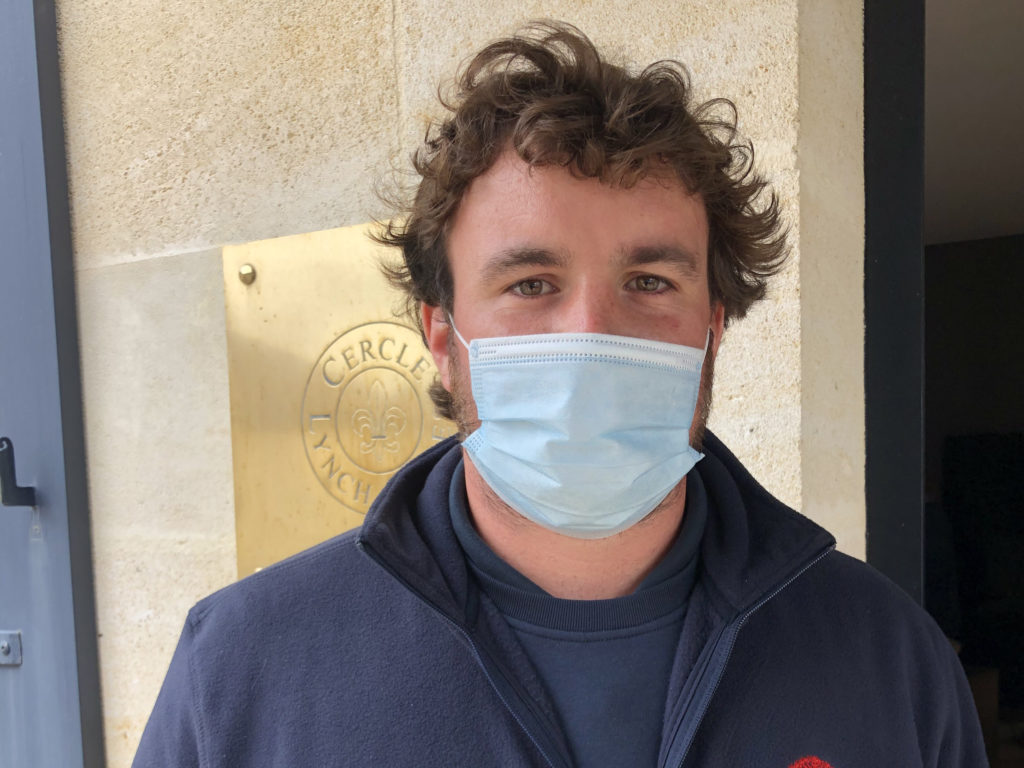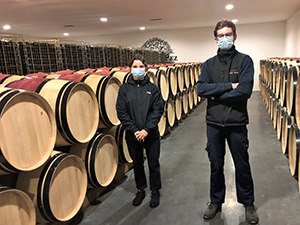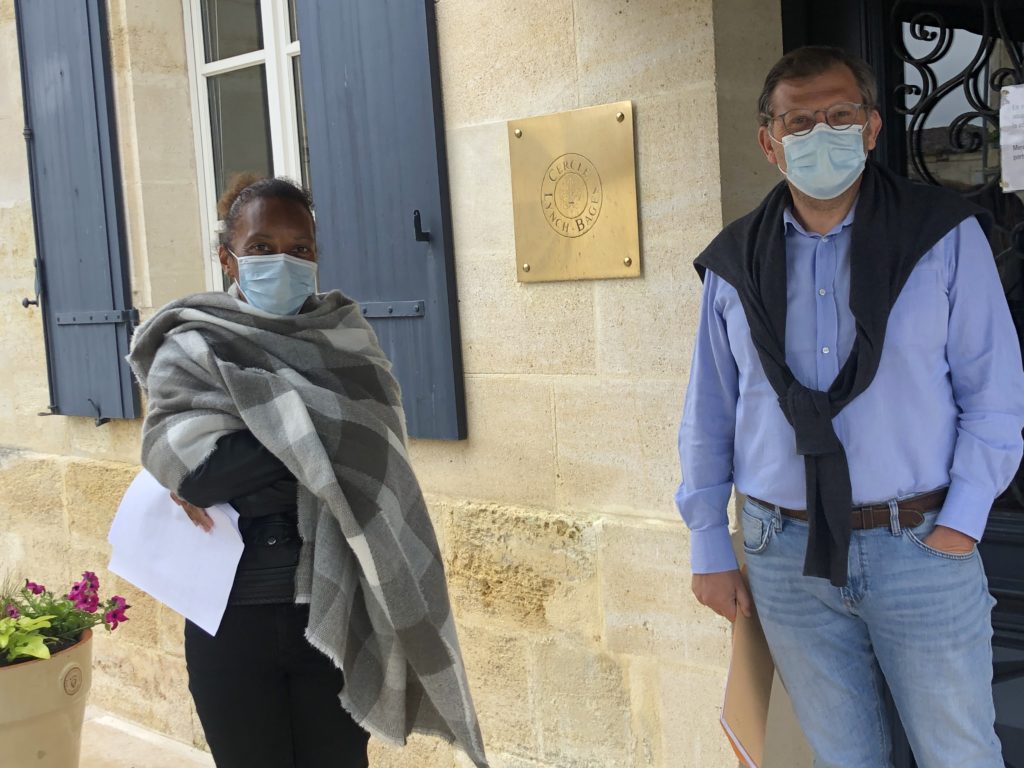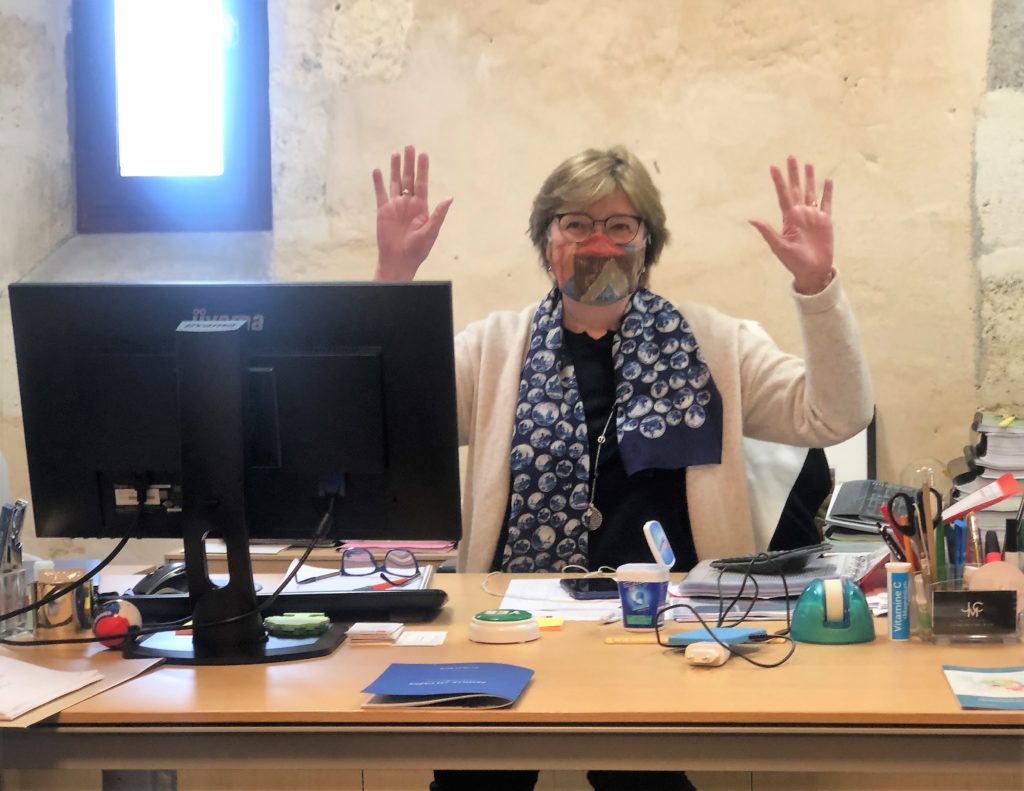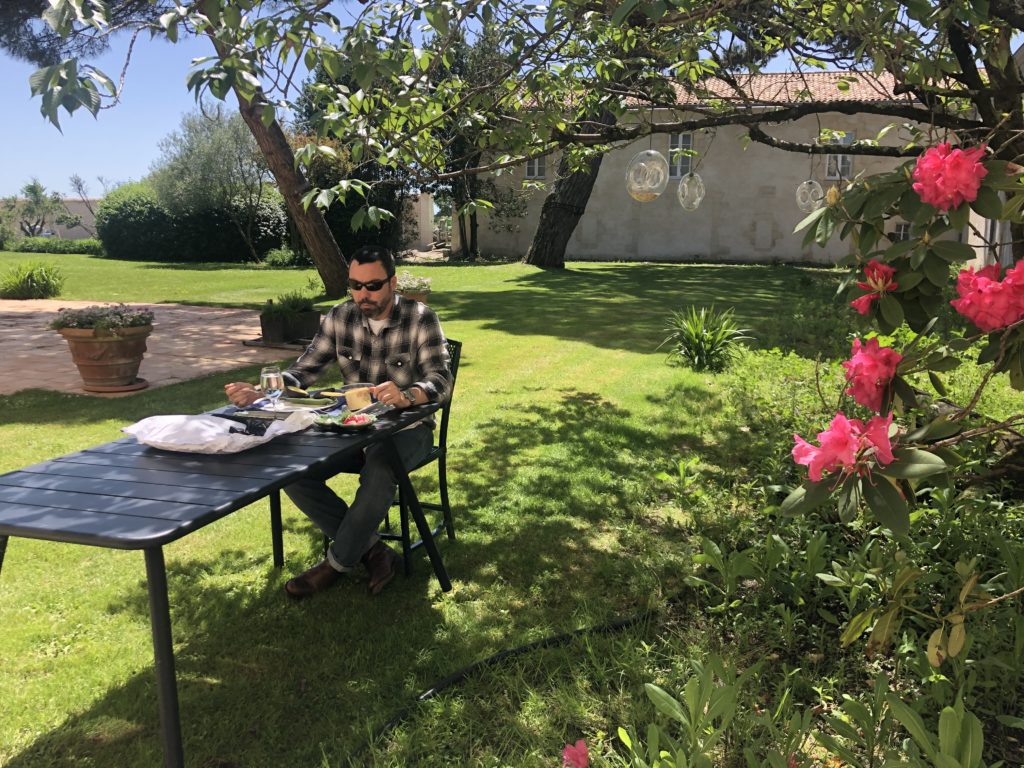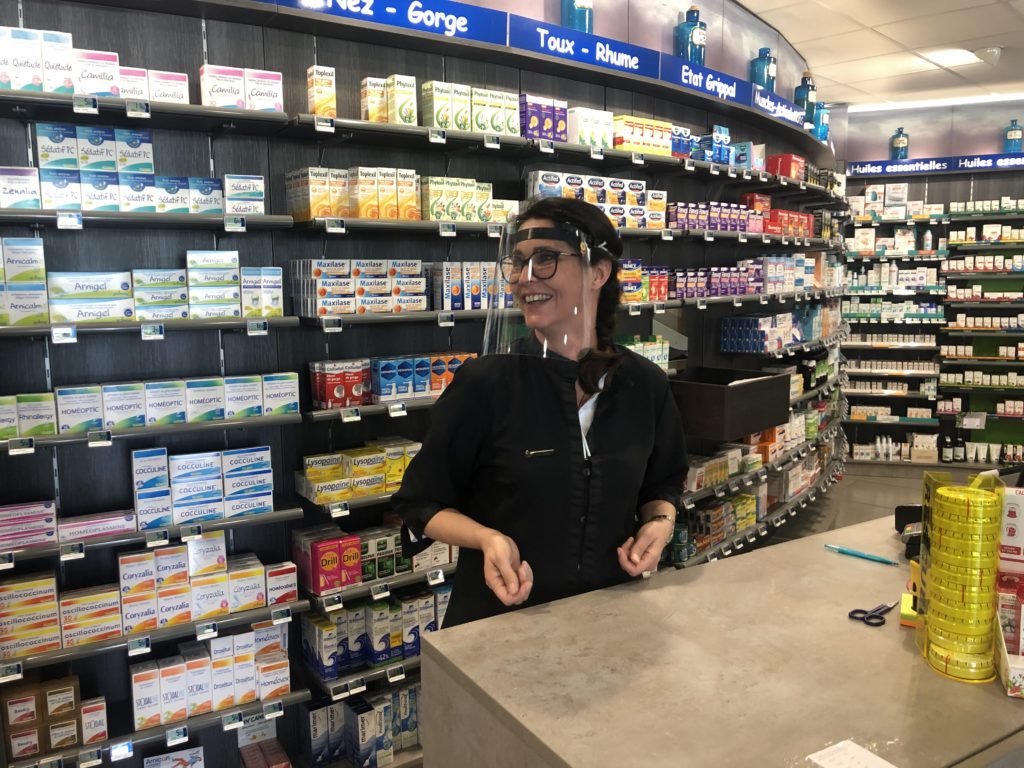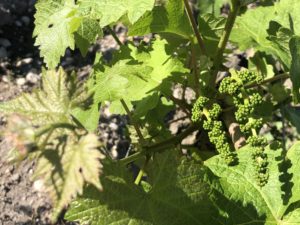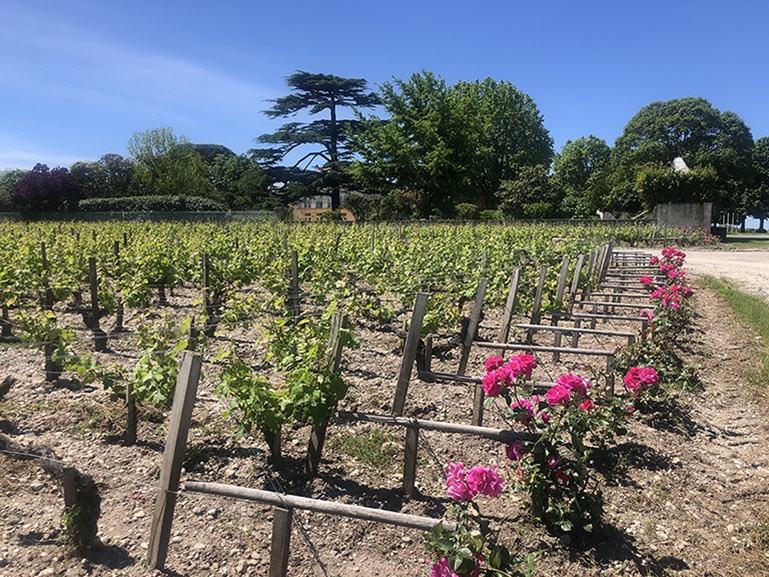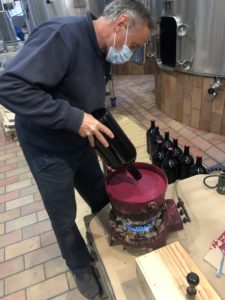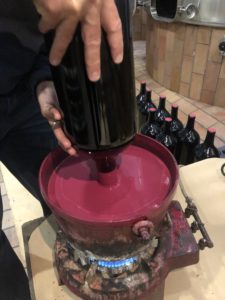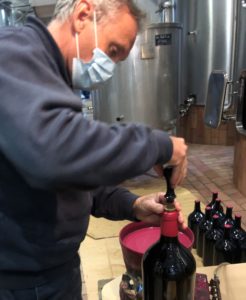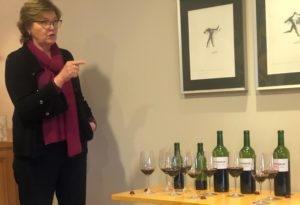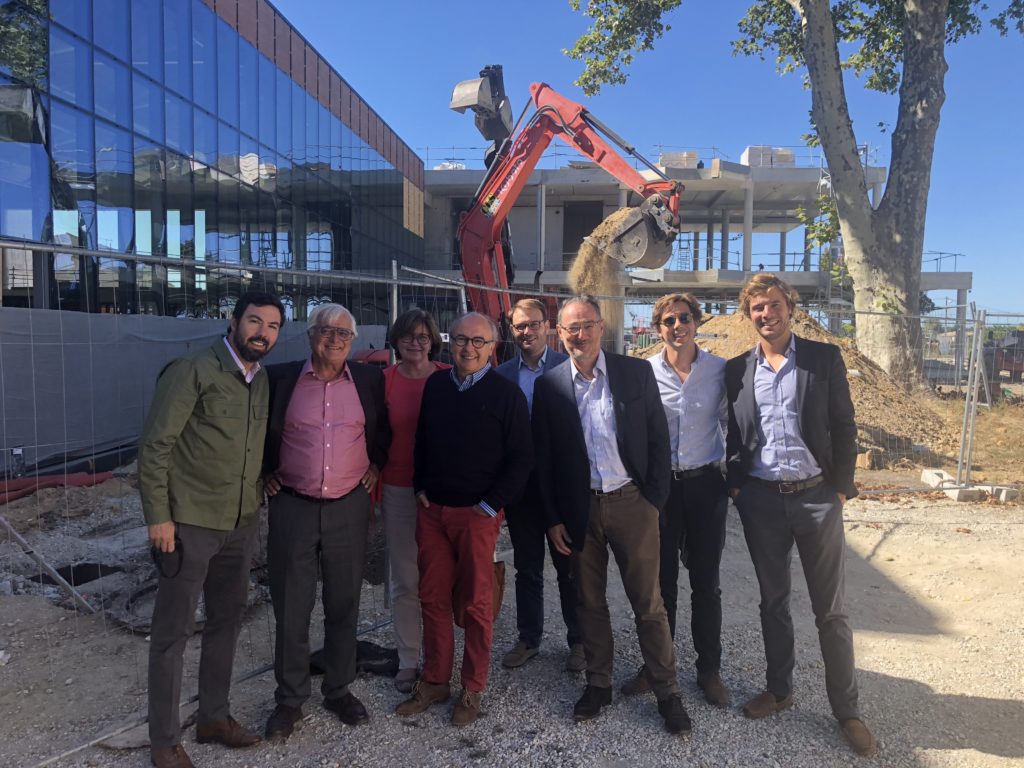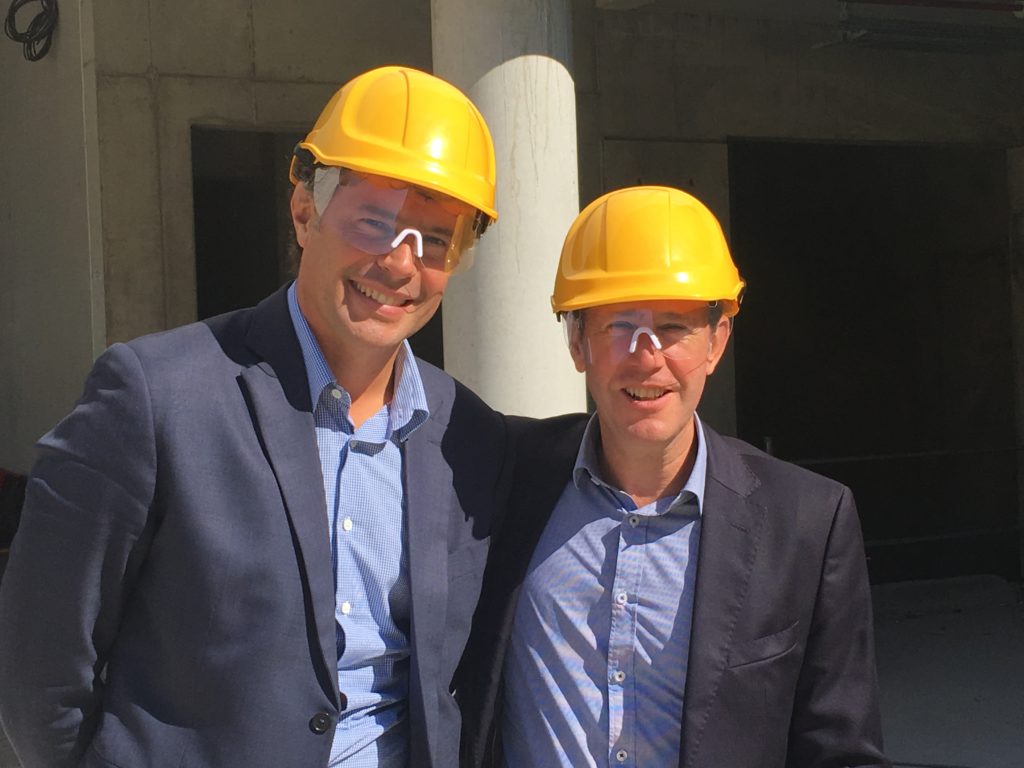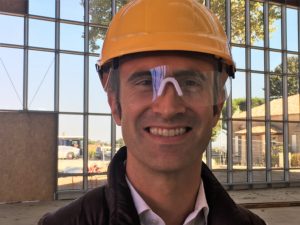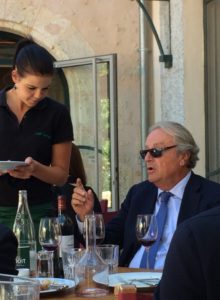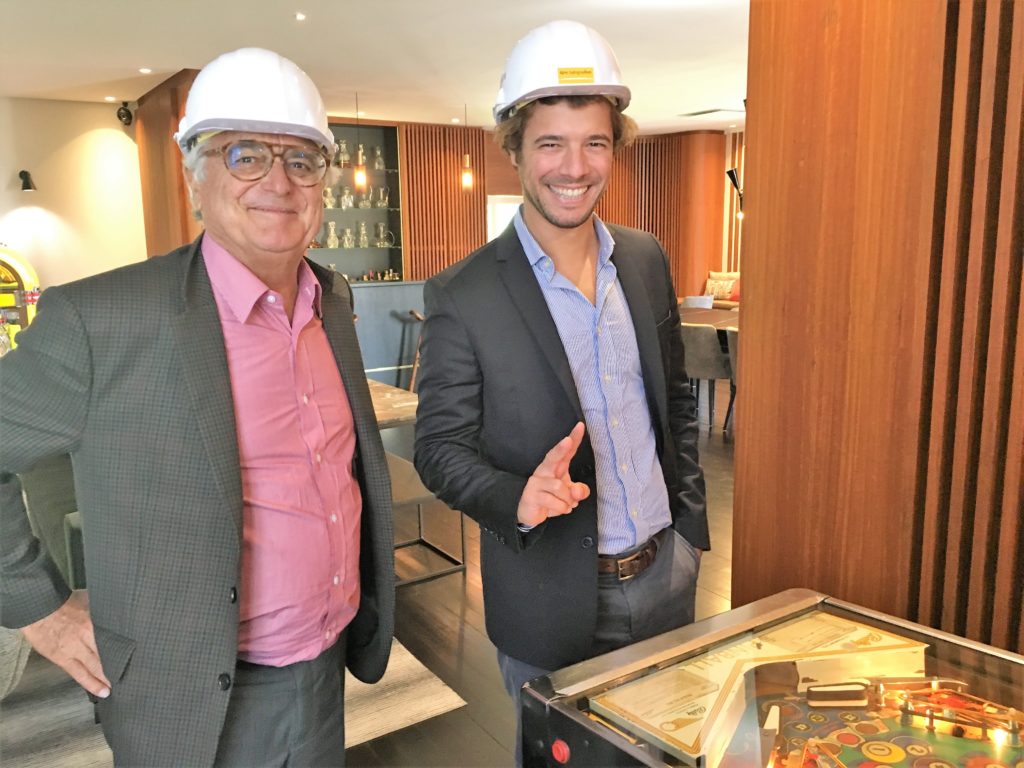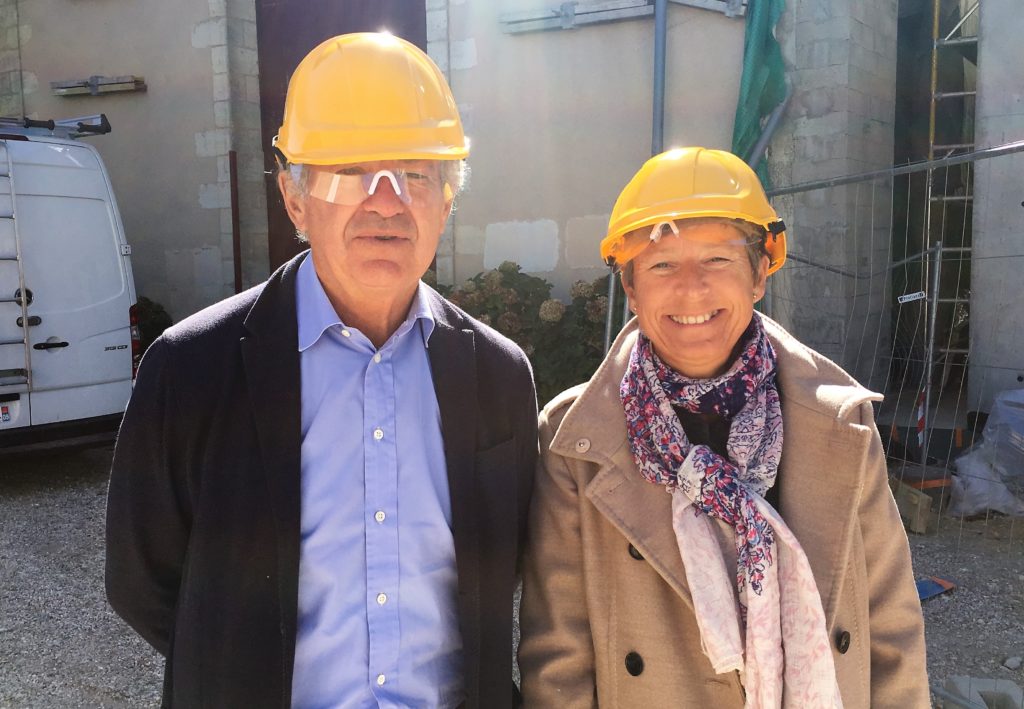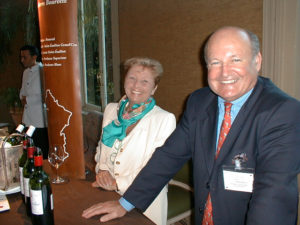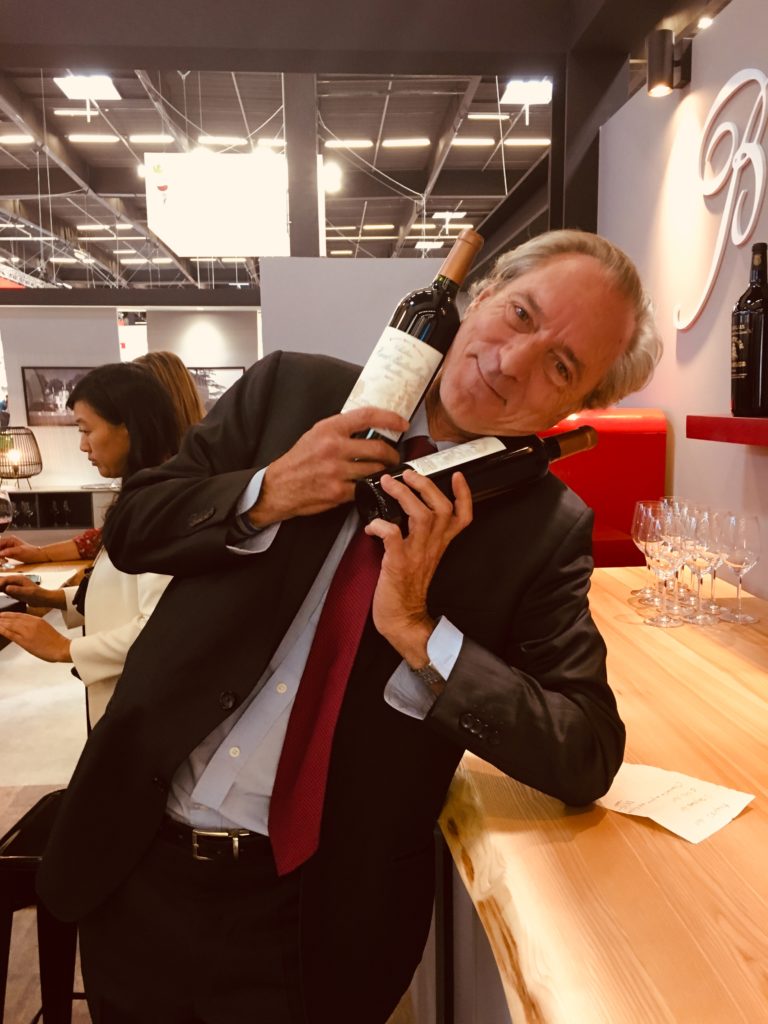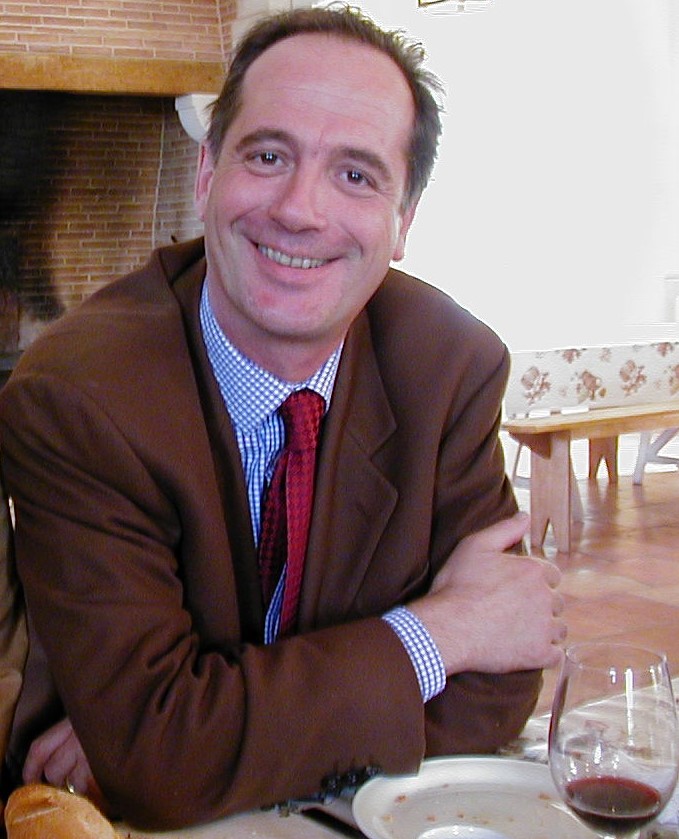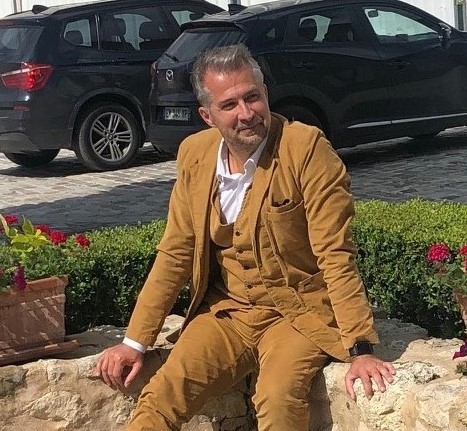This Monday, May 11th, had a smell of Freedom…
This Monday, May 11th, smelled of freedom. All over France, we are officially “de-confined”! Not entirely free to come and go as we see fit, as we are still deprived of access to restaurants, limited to 100 km (from a birds eye view) for our trips, and ordered to flee group meetings and avoid “crowded and confined spaces”… It’s a good start!
Echoes that reach us indicate a fairly satisfactory recovery. In Bordeaux, Denis Mollat, the largest bookseller in France, expresses his satisfaction to me by telephone at having received a record number of customers in his reopened bookstore today. The stores in the center of Bordeaux, he tells me, are also very busy. It’s a good sign…
In our Bages offices, the administrative and sales teams are back, wearing protective masks or visors… While attentive to the necessary distancing, each returns to his marks…
A few continue to work from home, for different reasons – childcare, more suitable premises, etc. The recovery will be gradual. The ambiance is good. Everyone seems happy to see each other again.
Our children visit us, and we have started seeing some friends. Always respecting the “barrier gestures” and the necessary distance. Sara, the oldest of our grandchildren, flew yesterday from New York to the University of California where she is due to finish her term. Two of our Bordeaux grandchildren went back to school this morning. Things are going back to normal.
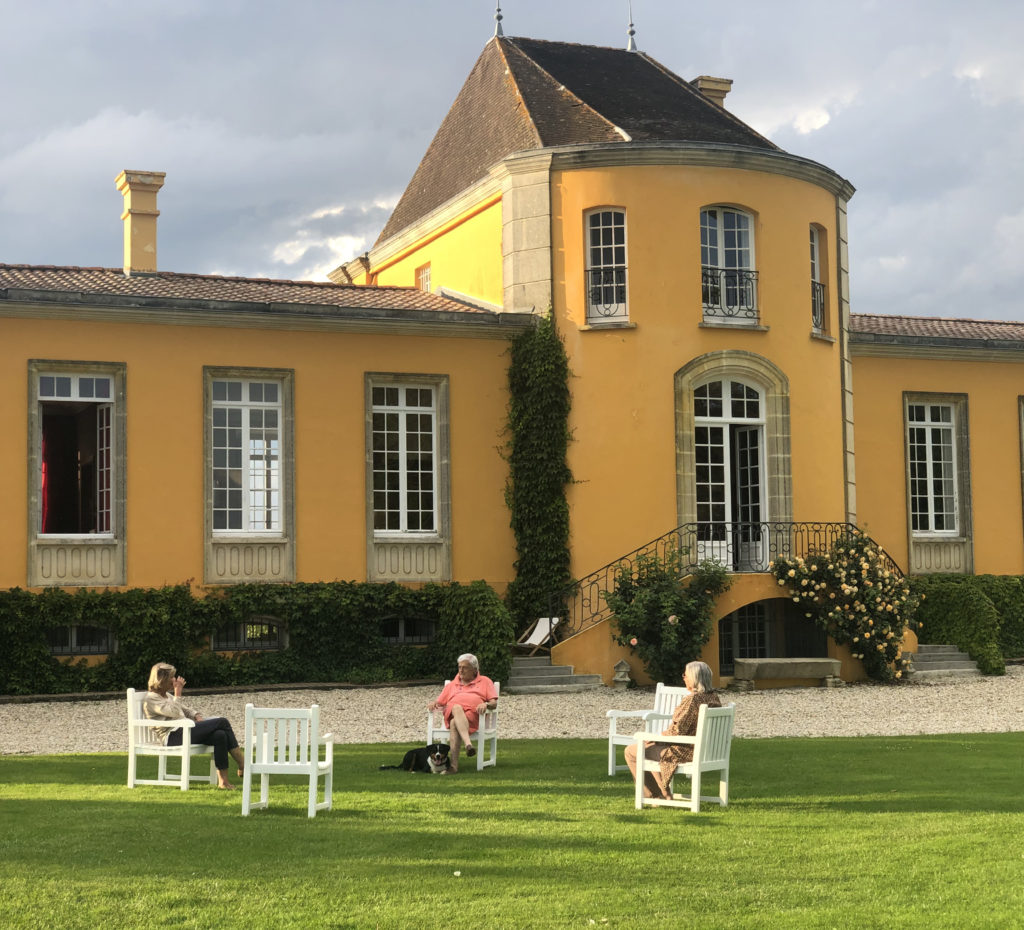
Marvin Cartmell Overton

I learn of the death of Marvin Overton. With him disappears one of the great figures of the wine world of the 70s and 80s. Successful neurosurgeon in Fort Worth,Texas, he contributed powerfully to the development and the popularity of Bordeaux wines in the United States, organizing lavish gastronomic festivals and memorable marathon tastings at his ranch. Professionals and amateurs alike were fighting to be invited. His sincere love and knowledge, his generosity remain legendary, as does his entire journey.
In the early 1990s, having inexplicably recovered from a serious illness, he radically changed the course of his life. Convinced that he owed his healing to a miracle, he converted, became “born again”, and devoted his efforts, his money and his time to preach the good word. He suddenly gave up his passion for wine and disappeared from the scene. He dispersed his personal cellar, which in a few years had developed into one of the most imposing collection of fine wines in the world, at auctions in London, Chicago and New York. With his wife Sue, he traveled the roads to preach the good word to the four corners of Texas. A mission to which he dedicated himself to for 25 years.
The vineyard is flourishing… the 2018 is being bottled.
The early spring promotes the development of the vine. The first tight clusters appear between the young leaves. We are approaching the time of flowering which will occur during the month of May.
This is an important step, the proper progress of which determines the volume of the harvest and influences the good constitution and balance of the bunches. A key moment of the vintage. The very variable weather in recent days – mild temperatures, alternating rains and sunny days – is favorable to vegetation.
It is also a concern. Vine technicians tell us that the “pressure” of cryptogamic diseases of the vine is strong. Mildew in particular. This is a classic phenomenon at this time of the year. It is contained for the moment by the care that the winegrowers bring to the maintenance of the vineyard, which must be cleared of the wild grasses which invaded it this winter. Admittedly, they enrich and aerate the soil, but their extended proximity to the vines favors the development of parasitic molds. We must be very attentive, playing with the weather and hoping that prolonged rains will not disrupt access to the plots… It is a big manual and mechanical work, which challenges the vine worker and requires great skill on the part of the tractor driver.
In the Domaine des Sénéchaux, and at Domaine de L’Ostal, we are preparing the bottling of the 2018 vintage. The bottling is also underway at Ormes de Pez in Saint Estèphe, as well as at Haut-Batailley in Pauillac
As for Lynch-Bages, we have completed the bottling of Echo 2018, our “second wine”, and are preparing that of the “grand vin”. We also finalized adjustments to the blend of 2019, a vintage which should make its debut in the world before summer.
In Bordeaux, we are settling into the starting blocks…
Attentive to the echoes that come from places of consumption, the members of the Union des Grands Crus are preparing for the month of June the official presentation of the excellent 2019 vintage in Bordeaux and in a dozen of major cities of the world. It will be, if not necessary, at least very useful, to ensure the success of the “en primeur” release of the vintage. In the coming days, the properties will also begin to welcome their potential clients on an individual basis. Bordeaux is only 50km (35 miles) away, Libourne at 80. It takes barely 6 more to reach Saint Estephe. Merchants and brokers can now drive around in the vineyard without special authorization. Many say that postponing the release – the “sortie” – because of the sanitary situation is not desirable. September would not change much and a one year postponement, desired by some French or foreign operators, would cause two vintages to collide, questioning the very spirit of the system. Businesses along the chain must also be given the means to operate, in Bordeaux as elsewhere.
Of course, there are many uncertainties hanging over the market today. What will be the impact of the Corona crisis? What will be its effect on demand, therefore on purchasing decisions, volumes traded and selling prices?
I received a message from a surgeon friend in Philadelphia. He believes that in the next two years, the current commotion will have a “favorable” effect on the price of wine. In other words, he is expecting lower prices. Responsible for buying good wines for several groups of amateurs and maintaining their reserves, he questions himself and asks me to counsel him in his purchasing decisions. A legitimate question, but an embarrassing one. I don’t have a crystal ball. Educated, however, by the experience of previous crises, I know that he is probably right. We must expect changes. They are sometimes brutal in our profession, but their duration and extent are difficult to predict. To all wine lovers who are pondering the same question, here is my answer:
The « Place de Bordeaux »…
To properly build and maintain a quality cellar well stocked with great Bordeaux wines, it is essential to understand how the distribution works. Bordeaux is the largest quality wine production region in the world. In the department of Gironde the vineyard extends over a large area, around 300,000 acres in total, Annd produces around 5 million hectoliters of wine every year. A significant part of this volume is controlled by a powerful and well-organized cooperative network. There is a variety of marketing methods. For the most demanded segment, that is to say the 300 or 400 “chateaux” which have made its international reputation, Bordeaux benefits from a specific system – “the Place de Bordeaux” – established long ago. It does not exist nor operate in a similar fashion in any other region of the world.
Valentin Lillet, broker in Bordeaux and Dan Snook (Joanne USA)
The chateaux offer their wine “en primeur” to the merchants, the “Négociants de la Place”, a few months after the harvest and about a year before bottling, i.e. 15 to 18 months before their availability. The operation is carried out through brokers, called the “Courtiers de Bordeaux” who provide the necessary articulation and support and ensure the smooth flow of information and the speed – and the security – of transactions.
The merchants, in turn, sell in France to wholesalers, restaurants, even individuals, or abroad to importers or directly to other operators, according to circuits which depend on customs and traditions – and legislation – of each country. It is a system that has worked for 300 years and has demonstrated its flexibility and its adaptability to new sales methods and markets discovered throughout the long history of Bordeaux. The commercial chain can therefore appear very long and sometimes very complicated. However, it is the basis for the distribution of the great Bordeaux wines around the world. It has been operating for centuries, with ups and downs, punctuated by periods of prosperity regularly interrupted by severe crises (vine diseases and phylloxera at the end of the 19th century, great depression of the 1930s, World War II, oil shock of 1973, Gulf War in 1991, financial crisis of 2008 etc.).
This original trade organization, which we owe to the British, German and Dutch traders of the 17th century, is unique in the world. It has the advantage of separating the production and sales functions and allows each profession to focus on its specialty:
1) the producer on vineyard management, wine making, technical investment and search for quality. He does not have to worry about payment, which he usually collects before the wine is delivered (he financial risk is borne by the merchant, who finds himself immediately out of the game if he does not honor his signature…
2) the merchant on logistics and sales, both complex internationally.
The “Place de Bordeaux” is made up of a multitude of trading companies (around 300 in Bordeaux and Libourne), more or less specialized by area or by type of product, some very old – a real spider web that effectively covers all the countries of the world. The Negociant does the purchasing through the “Courtier”, the broker, who ensures the liaison with the producer. The Courtier “senses the market”, gathers information on available wines and is familiar of the merchant’s state of mind and needs. The profession is regulated. There are around 80 recognized “Courtiers” in Bordeaux, holders of a professional card issued by the Bordeaux Chamber of Commerce and Industry. They, along with 120 assistants, “juniors” or trainees, are very active year-round. Like the merchants themselves, they may have a specialty (selling in bulk or in bottles, for example). Together with the Negociants, they form a powerful force at the service of Bordeaux wine, young and dynamic figures little known to the public, to which I want to pay tribute by illustrating my remarks with a little portrait gallery.
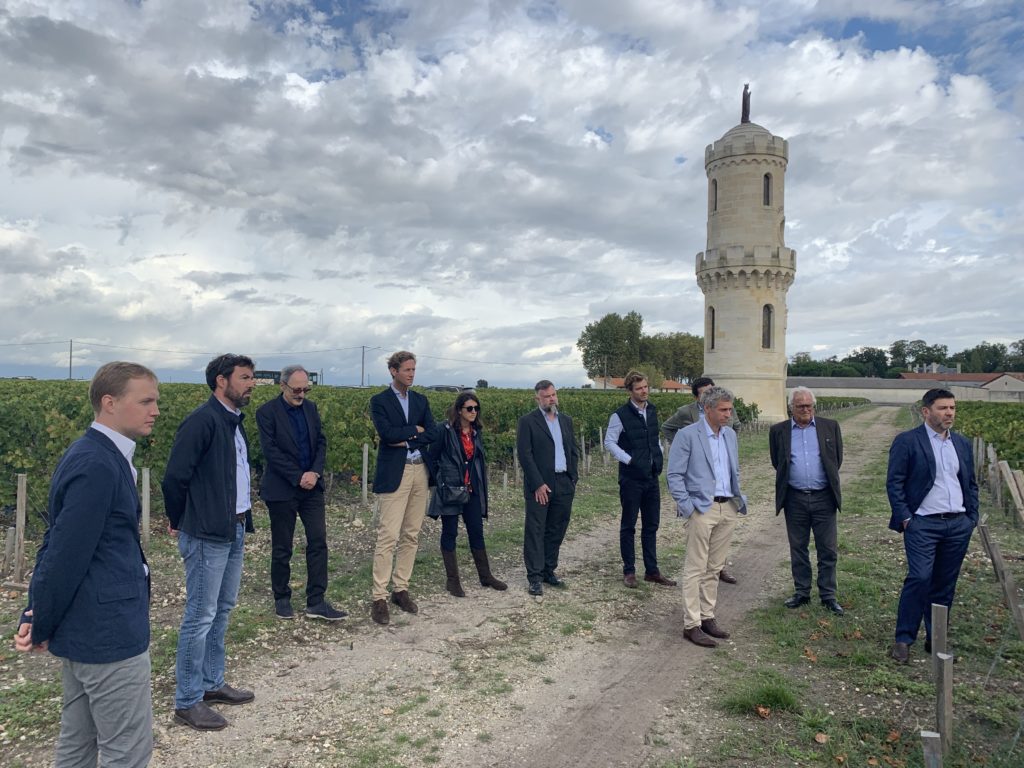
This distribution of roles provides the chateaux with an efficient commercial structure that only very few could afford individually. It makes wines available all over the world for shops, restaurants and private cellars. This is what I like to call “capillarity” distribution, running from Bordeaux’s artery down to the most remote locations
Most Grands Crus are offered “en primeur”…
Throughout the year, the Courtiers (brokers) continue to ensure a good two-way flow of information between trading houses and properties. When the time comes, a few months after the harvest, when the delicate blending of the lots of the young wine is finished, the new vintage can finally be tasted… And, if the general climate appears positive, marketing is prepared in liaison with the brokers. They give the chateau indications on the possible “prix de sortie” (release price) and the identity of possible buyers. The tension gradually rises. When the moment seems favorable, the chateau decides on the release price, the terms of payment and delivery. And finally fires the starting shot… Care must be taken to ensure that the sale does not fall on a public holiday in London, Hong Kong or elsewhere, and also that there are not too many that day to compete for brokers’ attention. Everything then goes very quickly, and orally. Brokers call each potential customer over the phone. If everything is well prepared and the business “climate” is right, transaction are usually quick. Finally, if necessary, the broker confirms the success of his intervention by issuing a “bordereau”, a slip, and sends the copy to each party. There are no invoices or purchase orders at this stage.The broker’s fee is only 2% of the amount of the transaction. Of course, the success of the campaign depends on the strength of demand, which reflects and amplifies the tremors of the world economy, alternating moments of anxiety and serenity.
Later, once the wine is shipped, a few weeks after it has been bottled, the chateaux retain little control over its distribution. They can direct their sales to such and such a merchant but they quickly lose the trace of their bottles and the control of their prices. This is where the good understanding of the system, the understanding and the cooperation between all the actors takes on its importance. It’s a key success factor. The good winemaker is not uninterested in what is happening in the places of consumption. Quite the contrary … By relying on a good understanding of its commercial channels, one has effective means to establish and maintain, at low cost, a very useful contact with the end customer, who is sometimes at the other end of the world.
This is what I personally have been striving to do for many years, benefitting from the help of the Trade and traveling around, alone or with a few friends who shared the same vision.

Slow and steady wins the race…
The Chateau must also base its action on a long-term pricing policy, in conjunction with the distribution channels. It must be recognized that, in order for the chain to function and play its role, everyone must be able to a make a living.
When it comes to price, the entire device is, in its purest state, an applied example of the supply / demand balance. A textbook case. It is subject to jolts, completely unexpected, which result from factors independent of the actors of the system. In the history of wine, this was the case for all major crisis of the past. They were numerous and brought about great changes. But, despite the often repeated forecasts of numerous Cassanders, they have never put down a system which, like the Phoenix, has been able to be reborn and regenerated, sometimes with new players, both on the property and trading sides.
Thus, I have no doubt that COVID 19 and the current sanitary situation are steering our boat towards more tormented seas. What should we expect for the coming months? All things considered, experience tells me that the price of our products will come under strong downward pressure. This pressure will not affect existing stocks in the same way as it will affect the release prices of the 2019 vintage. The previous years have been acquired by the Trade at a certain price level and professionals will do their best to sell their inventory without recording a loss. In practice, what will happen will depend on everyone’s financial situation and resilience. It is impossible to make a general forecast. Some will resist, if they have the ability to wait for better times … others will eventually give up, and will get rid of their stocks by adjusting their selling price. They will start with the wines with the least sustained demand, at all price ranges, which have been in the past more difficult to sell, or less profitable. It is therefore possible that in the coming months the buyer will be exposed to offers that will seem interesting, perhaps irresistible. It is, however, impossible to predict where and when they will happen, nor at what level of the trade chain, nor for how long.
I’m only sure of one thing: if this sanitary situation leads us into the economic crisis that some people are blaring out, it WILL happen. In addition, competition is in full swing, information is circulating quickly and there is today great transparency for prices.
Pierre-Antoine Castéja and Anne Szersnovicz (Maison Joanne)
For the “en primeur” market and the 2019 vintage in particular, it is a completely different matter. We have to think differently. We can certainly predict that the pressure on prices will have an effect on the release price. It will be lower than that of previous vintages. The market will undoubtedly be narrower and the difficulties, which are global, will force the seller to adapt to the economic context. However, it should not be forgotten that the price of this new vintage will have an immediate effect on the value of previous ones, still present in the cellars of the buyers. So the chateau has to be careful. When it sets its release price, the château must protect its customers as much as possible and think about the long-term consequences of this decision. This means that the producer must have a real pricing policy and follow it over time.
Each feeds their own thinking in their own way. To schematise, there are three possible attitudes which are independent of the general price level and the quality of the crop: – 1) ask for the highest possible price at time “T”. If it works, it’s a triumph, great for the ego. To achieve this, if it is useful, it will be necessary to artificially reinforce demand by reducing supply by a smaller production, a more drastic selection or the release of only a small volume. Or a combination of the three; – 2) try to find the “right” price, which will generate profit for all the actors in the chain (without forgetting the end customer himself if he – or his widow (it works both ways) – decides to sell his cellar at auction in the future); – 3) do not think too much and offer the wine at a higher price than that of the neighbor. Because quality is better, of course… or this or that fashionable journalist gave him a higher score… From my point of view, it is the worst method, but… it requires so little effort and it’s soooo much easier!
Christian Moueix (Etablissements J.P. Moueix)
both operating from Libourne
In our Bordeaux estates, Lynch-Bages and Haut-Batailley in Pauillac and Ormes de Pez in Saint Estèphe, we have long rejected #3.
When the circumstances permit, # 1 can work, but has the disadvantage of hindering a confident and constructive relationship in the long term. Conventional but more or less artificial methods of supply reduction to push prices up certainly do not improve the visibility of the product on world markets and often lead to an increase in stocks over time. This should never be forgotten: AN AVERAGE OF ONE HARVEST MUST BE CONSUMED EVERY YEAR.
This strategy can lead to selling at more or less broken prices large volumes of seconds, even thirds or fourth wines, a phenomenon that can be observed here and there, on both banks of the Garonne. It is therefore a risky policy, the consequences of which must be carefully assessed.
It is nevertheless conceivable in certain cases. The small vineyards of Pomerol are a good example of success. Others, which used to be called “garage wines”, because of their very limited production, were in vogue twenty years ago. After some resounding successes, many experienced long-term failure due to the natural versatility of their customers and the narrowness of their distribution. Most have left the scene today. Their success often depended on the support of the specialized press. This being by nature, alas, very volatile, a self-respecting critic having to regularly discover new stars in order to keep his reader in suspense.
Laurent Quancard, courtier
For our Bordeaux estates, we believe in proposition # 2 : Finding the “right” price which benefits all the actors in the chain. This approach expresses the classic distinction in the Bordeaux professional environment between so-called “distributive” brands and those sometimes qualified as “speculative”. It has long inspired our marketing strategy. I am personally convinced that this is the only policy which, combined with quality production, has enabled us in the long term to build a wide distribution of our wine and maintain its reputation. I am proud, when I travel, to discover Lynch-Bages in the most unexpected places. I remember the joy I felt in the early 90’s at a border crossing grocery store in Macau, in the middle of the no man’s land of almost a kilometer which then separated the territory under Portuguese administration from the Chinese province of Canton.
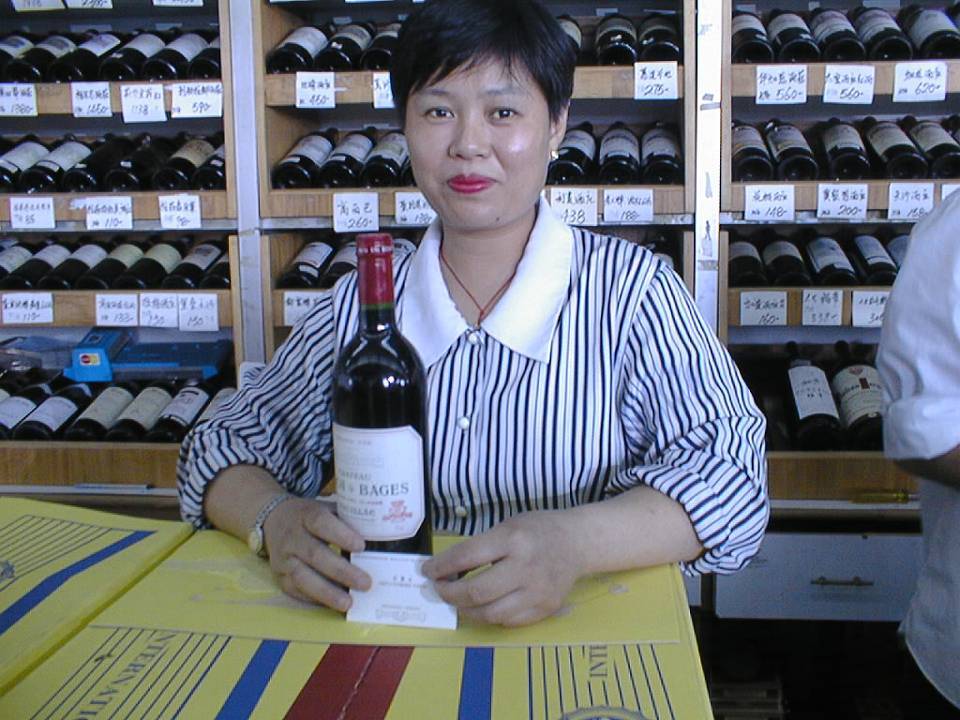
Can a good knowledge of the mechanics of the system be useful to the end buyer? Certainly, yes. At the time of “en primeur” release, it allows him to better estimate the value that the vintage will take in the future, for a given chateau. And if not the guarantee, at least the probability that his purchase will turn out to be a good deal over time.
Putting together a good cellar requires some home work…
The information exists. In fact, in Bordeaux, there is an active and increasingly accessible secondary market for older vintages, provided that you consider the right channel and place your trust well. The numerous auctions in Paris, London or elsewhere can also give interesting indications. It’s fairly easy to identify the chateaux that are most likely to prove to have been good purchases over the years. Of course, this requires a bit of curiosity and research. The best purchases do not necessarily relate to the cheapest wines. Petrus, Lafite and Mouton Rothschild, to take only these three examples, which are among the most expensive, generally turn out to be good choices over the long term. Other names, fortunately quite numerous, have successfully adopted the same strategy for a long time. Come to my mind the names of my neighbor Grand-Puy Lacoste in Pauillac, Léoville-Barton, Branaire Ducru and Beychevelle in Saint Julien, Calon-Ségur and Lafon-Rochet in Saint Estèphe, Giscours and Rauzan-Ségla in Margaux … Haut- Bailly in the Graves, Canon in Saint-Emilion… Of course, there are others…
I concluded my response to my friend in Philadelphia by regretting that I cannot give him real “tips” on the good deals which, in the weeks or months to come, could be – and will presumably be – put forth here and there. My advice is very simple: Knowing that there are excellent fine wines professionals in Philadelphia, I recommend that he knows them well, listen to their recommendations, and trust their judgement.
This is the same advice I would like to give to any potential drinker who does me the honor of reading my prose, wherever he is and whatever place he occupies in the vast world of wine. Hoping that these remarks will help him to be curious and interested in the engaging dynamic of Bordeaux “primeurs”. Just as I believe in a long-term vision to sell one’s harvest, I am convinced that there is also a long-term policy to enrich his cellar successfully, for the greatest happiness of his family, his friends… and of his successors.
A family from Bordeaux…
I end this long message by signaling the publication of a landmark piece in the history of Bordeaux wine. This is a book written by Alain Blondy, professor at the Sorbonne, based on the analysis of the family archives left by Daniel Lawton’s after his death two years ago. Like his father and grandfather, Daniel was seventh generation of a family of wine brokers, who came from Ireland and settled in Bordeaux in 1739. He was a prominent figure of the Bordeaux society, of the local economic and political life and of his profession.

A man with great righteousness, he was a discreet, delicious gentleman, of perfect education. A great sportsman too. An excellent tennis player, he was long president of Villa Primrose, the old and famous Bordeaux club. For several decades, Daniel Lawton made himself loved by his clients, his family and his friends, both professional and athletic.
When I moved back to Pauillac.
When I moved back to Pauillac for good, I got to know him during the very hard crisis that followed the oil shock of 1973. I quickly understood that he was a man whose word had weight and whom you could trust in difficult times. I am proud to have been his friend and grateful for what he taught me. The book, “LES LAWTON, a Bordeaux wine dynasty”, retraces the fascinating saga of this Irish family whose history has been intermingled with that of Bordeaux for almost three centuries.
I can only recommend reading it. The book, published in Bordeaux as a co-edition by Denis Mollat and Éditions du Festin, will soon be available, if not already, in all good bookstores.
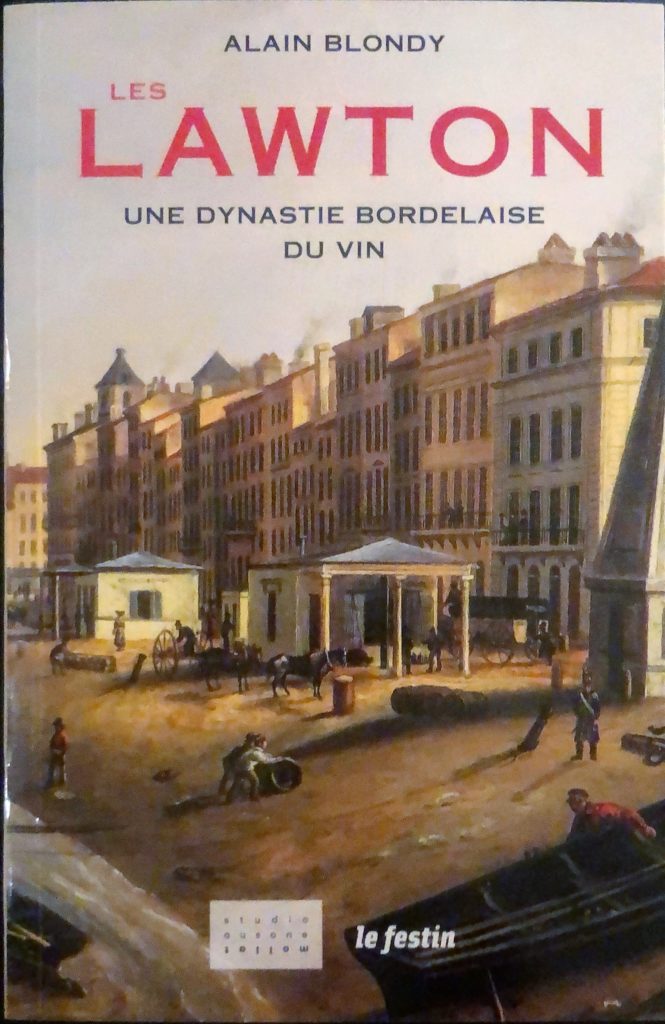
(Translated from French by Granddaughter #2 Afsaneh)


